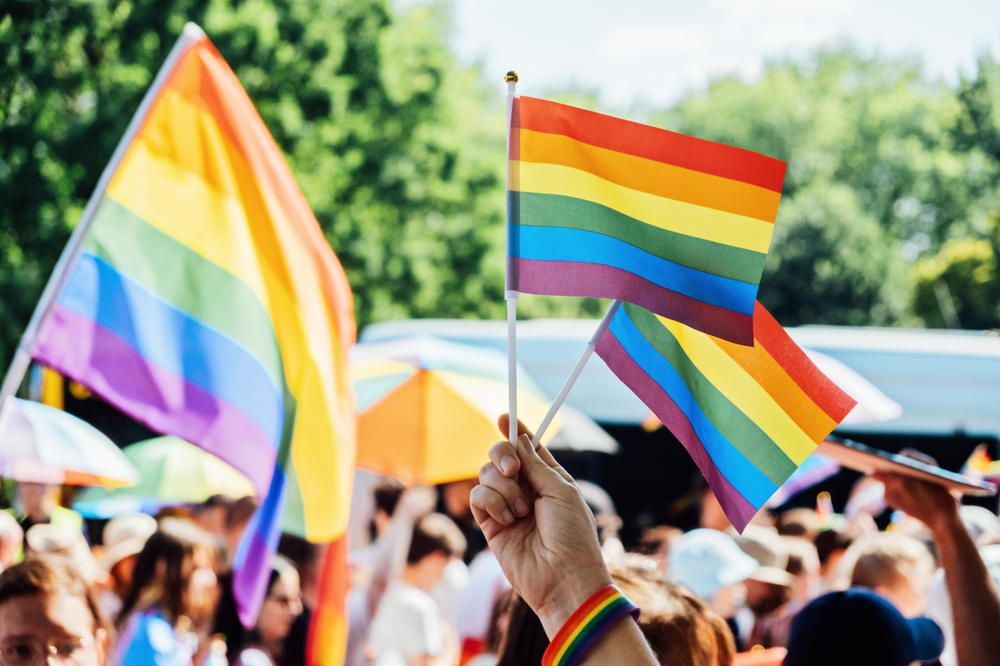With the arrival of June comes Pride Month, a time to gather together to celebrate the 2SLGBTQIA+ community and reflect on the progress achieved toward equality. Despite the ongoing challenges, such as anti-2SLGBTQIA+ laws, (according to the ACLU, there are currently almost 500 anti-2SLCBTQIA+ pieces of legislation in discussion across the US) there is a clear sense of resilience and hope that shines through.
Pride Month: A time to celebrate and advocate
Pride Month is a joyful and empowering celebration of 2SLGBTQIA+ people, culture, and rights. Throughout June, communities across the country host parades, protests, and live events such as drag shows, live theater, and memorials. We remember and honor those who have died as a result of the devastating effects of HIV/AIDS. This month is a mix of political activism and celebration, marking the 2SLGBTQIA+ community’s enormous achievements throughout the years.
The month celebrates the community’s role in shaping U.S. history, as documented by the Library of Congress. On June 11, 1999, President Bill Clinton declared June to be Gay and Lesbian Pride Month; 10 years later, on June 11, 2009, President Barack Obama expanded the designation to Lesbian, Gay Bisexual, and Transgender Pride Month.
The Pride symbol: Colors that unite
While the rainbow flag, designed in 1978 by artist Gilbert Baker, is commonly recognized as a symbol of 2SLGBTQIA+ pride, the colors it represents have significant connotations. The six-color flag depicts life (red), healing (orange), sunshine (yellow), nature (green), harmony (blue), and spirit (purple). Hot pink signified sex, and turquoise represented magic/art in its original eight-color rendition.
The rainbow flag has evolved over time, with recent modifications in support of the Black Lives Matter movement. Additional colors were added in 2021, including black to signify variety, brown to represent inclusivity, and light blue and pink to represent the trans pride flag. The community’s commitment to intersectionality and solidarity is reflected in this inclusive flag.
The Stonewall Uprising: Remembering the roots
The significance of June stems from its link to the historic Stonewall Uprising, a watershed point in the Gay Liberation Movement. A police raid on the legendary Stonewall Inn in New York City’s West Village in the early hours of June 28, 1969, resulted in a brave resistance by its clients. The Stonewall Riots that followed lasted for days, igniting a movement that echoed across the country.
Recognizing its historical significance, President Barack Obama recognized the Stonewall Inn as a New York City landmark in 2015 and a national monument in 2016. The 53rd anniversary of the inaugural Pride march, held in 1970, is a monument to the strength of collective action and the continuing spirit of the 2SLGBTQIA+ community.
Recognizing progress and looking ahead to an inclusive future
As we begin this Pride Month, let us remember that struggle frequently leads to growth. While the fight for equality and acceptance continues, we are encouraged by the dynamic and diverse community that has come together. We honor the important achievements of 2SLGBTQIA+ people throughout history and their current impact on the fabric of our nation.
Pride Month serves as a light of hope in a world where love knows no bounds, reminding us that acceptance and tolerance can triumph over prejudice. Let us use this month to reflect, educate, and renew our commitment to creating a future in which every individual is valued and welcomed for who they are. Happy Pride Month!











